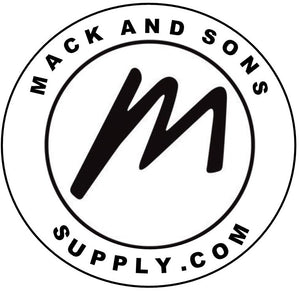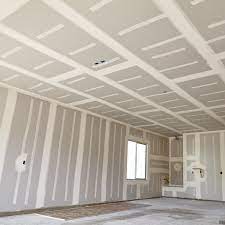All You Need to Know about Drywall
 It’s lightweight, cost-effective and the perfect way not only to complete a construction but to decorate your home. It goes by the name of drywall but also as wall board, gypsum board or sheetrock. But how much do we really know about this product? In order to make your next drywall project easier, we fill in the blanks you may have with some basic information about drywall.
It’s lightweight, cost-effective and the perfect way not only to complete a construction but to decorate your home. It goes by the name of drywall but also as wall board, gypsum board or sheetrock. But how much do we really know about this product? In order to make your next drywall project easier, we fill in the blanks you may have with some basic information about drywall.
What is drywall?
It’s a construction material. It comes in the form of sheets and standard drywall is made of gypsum plaster covered with paper. The sheets are fastened to the building’s frame with adhesives, nails, or screws while multiple sheets are joined together with tape. Then joint compound is applied on the tapes for a seamless appearance.
Not all drywall is the same
There are different types of drywall. It’s no wonder why many people turn to a professional drywall company for assistance. One of the benefits of drywall is that it contains gypsum which contains water and so the material retards the expansion of a fire. But the high demand for drywall installation in several applications and many home improvements have resulted to revolutionary solutions and thus plenty of drywall types.

If you turn to a drywall contractor, you’ll be asked whether you like a purple, blue, white or green gypsum board. You will be asked if there is moisture in the room you are planning to install drywall or a particular need to protect the wall from fire or mold. In short, there are drywall types that cover such needs and the colors represent different wallboards.
Your choices range from standard and mold resistant drywall to moisture resistant boards, fire resistant, sound proof and paperless drywall. Fire resistant drywall is categorized in types X and C with the latter retarding the spread of fire twice more than the former and ten times more than the standard boards.
Another differentiation among drywall is their size. Measured in length and thickness, the boards can be 8 to 14 inches long and ¼-inch to 5/8-inc thick. Reinforced boards that resist better sound, moisture, fire and mold are usually 5/8-inch thick.
Drywall is not just for walls
Drywall is the main material for walls and ceilings, but it’s also used to decorate rooms. It can be used to create coffers in the ceiling, arched openings, partitions, shelves, moldings, false ceilings, and more. They are the perfect solution when you want to install recessed lighting and decorate rooms in an easy way and with the confidence that you can easily remove drywall if you like to renovate.
Drywall can be repaired
Drywall can be cracked. The boards might get some nail holes. But drywall repair is possible. Small holes and cracks can be easily patched. The good news is that greater damage that would require the replacement of a whole sheet will not bring complete chaos to the home since drywall companies can replace a sheet.
Drywall installation is a task for pros only
Many people attempt to install drywall themselves and with so many DIY instructions online, some succeed too. But you need to know that it’s not an easy feat. It requires having some skills and getting the right tools. Hanging ceiling drywall is much harder simply because it goes overhead and although the boards are lightweight, they are lightweight as a construction material not for you to carry and lift. Actually, the drywall installer will use special equipment to hang the ceiling.
One last piece of information, there are different types of drywall finishing methods and these range from flat to texture but the boards must be properly sanded first.

